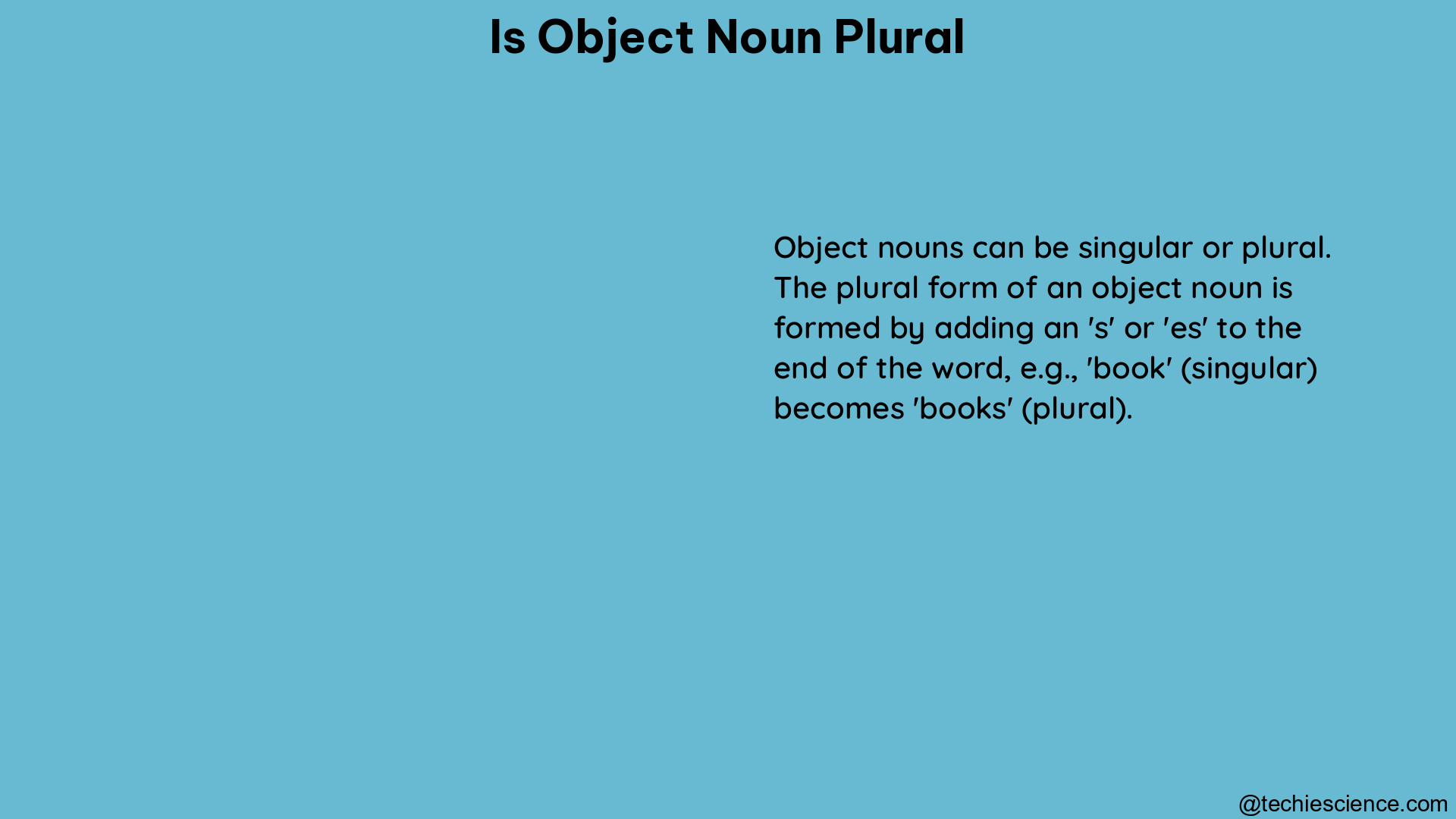The question of whether an object noun should be plural or singular in a sentence with a plural subject is a complex issue in English grammar. Understanding the nuances of subject-verb agreement, the usage of plural objects with plural subjects, and the considerations around inanimate objects can help writers navigate this grammatical conundrum effectively.
Subject-Verb Agreement
The fundamental principle of subject-verb agreement states that the verb must agree with its subject, not its object. This means that the verb form is determined by the subject, regardless of the number or form of the object. For example:
- “The students read their textbooks.” (Plural subject “students” takes the plural verb “read”)
- “The student reads their textbook.” (Singular subject “student” takes the singular verb “reads”)
In these sentences, the object nouns “textbooks” and “textbook” are plural and singular, respectively, but the verb form is determined by the subject, not the object.
Plural Objects with Plural Subjects

When the subject is plural, the object can be either singular or plural, depending on the context and the intended meaning. Consider the following examples:
- “The employees must wear their personal identification card.”
-
In this sentence, the object “identification card” is singular, emphasizing that each employee has one card.
-
“The employees must wear their personal identification cards.”
- Here, the object “identification cards” is plural, suggesting that each employee has multiple cards or that the sentence is referring to the cards of all the employees collectively.
The choice between a singular or plural object can affect the emphasis and nuance of the sentence. Using a singular object can highlight the individual nature of the item, while a plural object can convey a more collective or general meaning.
Inanimate Objects
When referring to inanimate objects, the use of plural pronouns like “they,” “them,” and “those” is common, even if the objects themselves are not people. This is a common grammatical convention in English. For example:
- “The books are on the table. I will put them away later.”
- “Those chairs look uncomfortable. I wonder if they are new.”
In these sentences, the plural pronouns “them” and “they” are used to refer to the inanimate objects “books” and “chairs,” respectively. This is a natural and widely accepted way of discussing non-living things in the plural.
Emphasis and Context
The choice between a singular or plural object can also affect the emphasis and meaning of the sentence. Consider the following examples:
- “They gave their word.”
-
In this sentence, the singular object “word” emphasizes that each person gave a single, individual promise or commitment.
-
“They gave their words.”
- Here, the plural object “words” suggests that each person contributed multiple statements or expressions, potentially implying a more detailed or nuanced set of communications.
The context and intended meaning of the sentence will often guide the decision to use a singular or plural object.
Avoiding Ambiguity
In some cases, restructuring the sentence to make the subject singular can help avoid ambiguity and make the meaning clearer. For example:
- “The team members must wear their personal identification card.”
-
This sentence is clear, as the singular subject “team member” matches the singular object “identification card.”
-
“The team members must wear their personal identification cards.”
- This sentence is also acceptable, as the plural object “identification cards” matches the plural subject “team members.”
However, the first example is more straightforward and less ambiguous, as it directly aligns the subject and object.
Conclusion
The question of whether an object noun should be plural or singular in a sentence with a plural subject is a nuanced and context-dependent issue in English grammar. By understanding the principles of subject-verb agreement, the usage of plural objects with plural subjects, the treatment of inanimate objects, and the role of emphasis and context, writers can navigate this grammatical challenge effectively and produce clear, unambiguous sentences.
Reference:
- https://www.reddit.com/r/grammar/comments/leilq3/if_the_object_is_singular_should_we_use_plural/
- https://ell.stackexchange.com/questions/54025/talking-about-inanimate-objects-in-plural-they-or-it
- https://the-sinistral.livejournal.com/1085477.html

Hi…..I’m a graduate with a Bachelor’s degree in English Literature. I wish to do a Masters in the same field someday and continue my career in Academia.
Let’s connect through LinkedIn: